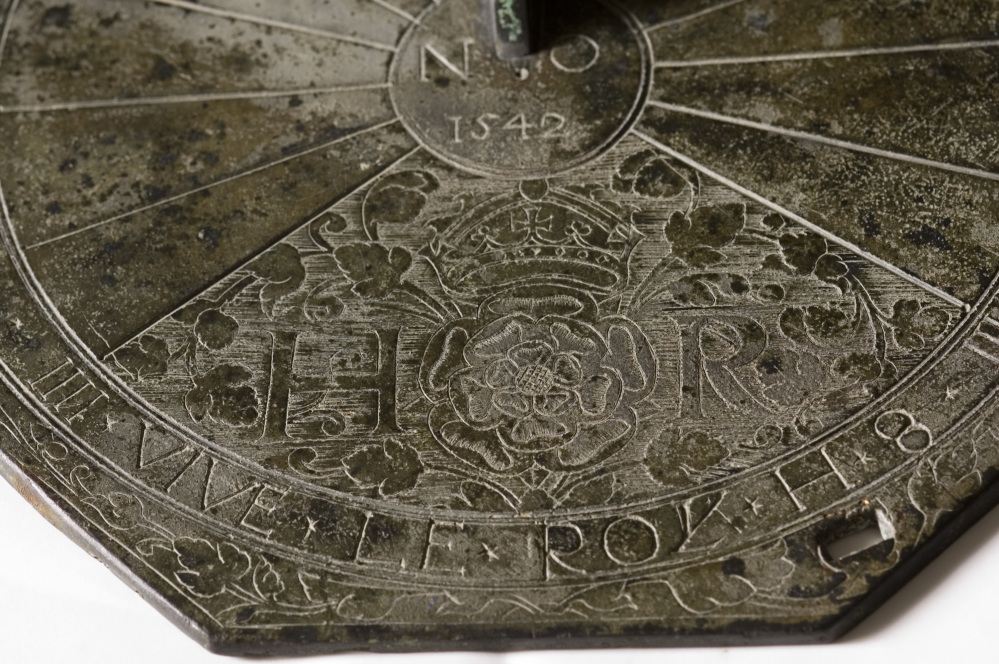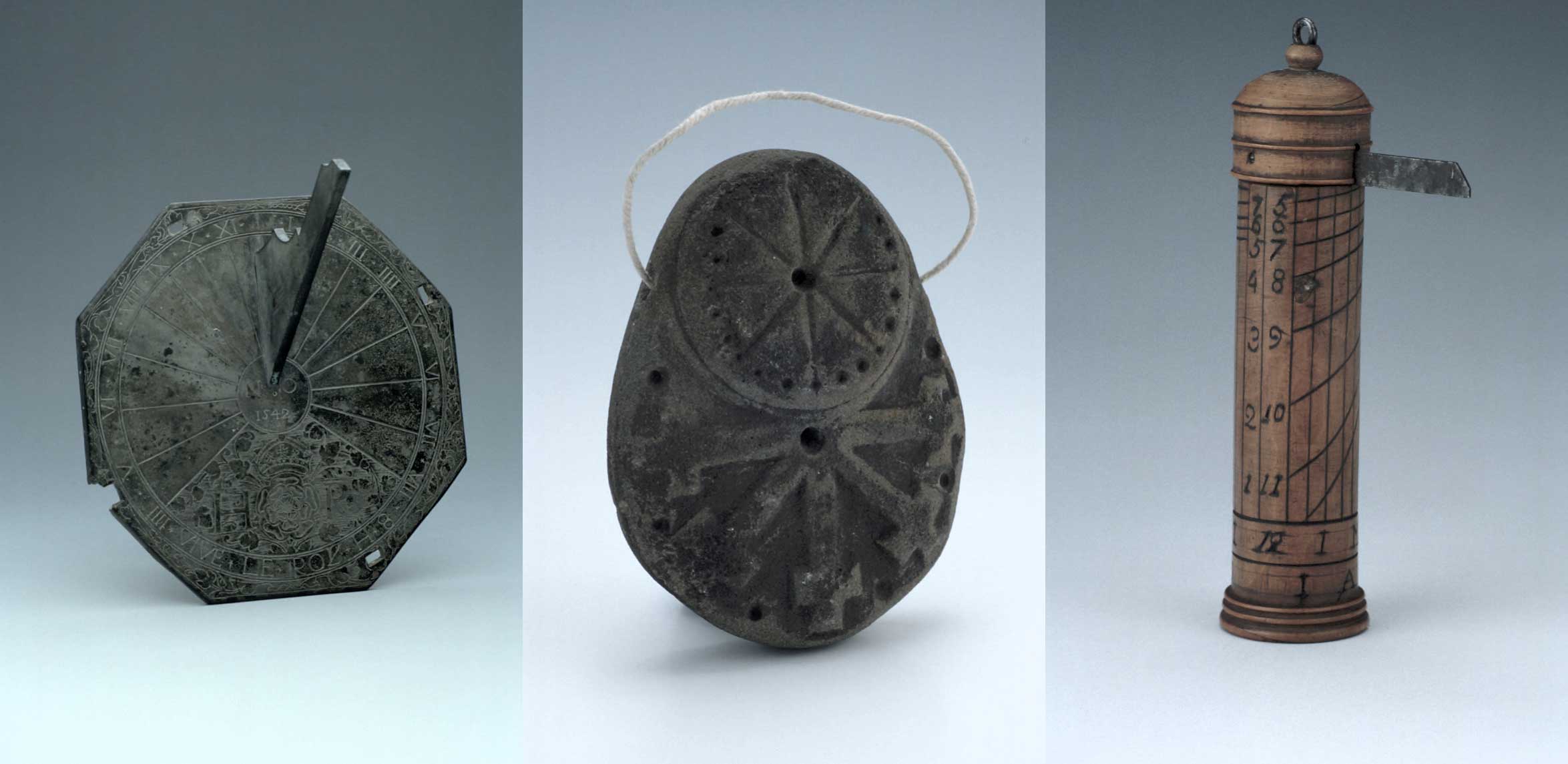Sundials
- Museum: Museum of the History of Science
- Description:
You can find out here more about some of the sundials we have in our collection at the Museum of the History of Science in Oxford and how they work.

Tudor Rose
This is the type of sundial that you see most often, especially in parks and in the gardens of large houses. They are fixed in position with twelve o’clock midday at the top of the dial plate, pointing North.
This one has the date it was made engraved on it (1542). It was made when King Henry the Eighth was King of England. You can see his emblem, the Tudor Rose. The words ‘Vive Le Roy H8’ are written in French, meaning ‘Long Live King Henry 8th’.
Cylinder Dial 1
This type of sundial was made from wood in the 1700’s. It has lots of different names, including ‘cylinder dial’, ‘pillar dial’ and ‘Shepherd’s dial’. It uses the height of the sun to tell the time.
The gnomon, which casts the shadow, can be moved depending on the time of the year. The hours are written up and down the side. The first letter of each month of the year is written at the bottom.
Stone sundial
This is the oldest of the sundials shown here. It was made in England in Medieval times. The material is a type of stone called sandstone. We think it would have been used by a religious person so they knew when to pray.
A guide to Roman numerals
Old sundials often use Roman numerals. Here’s a quick guide to Roman numerals from 1 to 12:
I -1
II -2
III -3
IV -4
V -5
VI -6
VII -7
VIII -8
IX -9
X -10
XI -11
XII -12
Missing gnomon
This sundial is missing it’s gnomon (the object which casts a shadow). This sundial is quite unusual because it would probably have had 2 gnomon (placed in the middle holes).
Telling the time
Instead of numbers to tell the time, on the bottom circle, this dial has crosses to mark the hours and holes around the edge to mark half hours.

Compass points and direction
To use a sundial properly you often need to know which direction to point your dial. The sun appears to rise in the east and to set in the west. Most dials (though not cylinder dials) need to have the tip of the gnomon (the object casting the shadow) pointing north. As the sun appears to move through the sky, the shadow it casts also seems to move, pointing at the different hour marks on the dial during the day.
The gnomon
The gnomon (pronounced ‘no-mon’) is a very important part of a sundial. It is the opaque object which sticks out, casting a shadow on the hour lines as the sun appears to move through the sky, allowing you to tell the time. Gnomons come in all different shapes and sizes.
Moving sun or moving earth?
Sundials work by making use of the apparent movement of the sun in the sky. However, although we talk about the sun ‘rising’ and ‘setting’ it is in fact the Earth that is moving, not the Sun. The Earth is constantly moving on its axis, taking 24 hours to revolve fully. As the part of the planet we are standing on faces the sun we have day, as it moves away from the sun we have night. For a great video showing this see
Cylinder Dial and the Seasons
This type of dial is different from many other dials because it uses the height of the sun to tell the time, rather than it’s movement across the sky. The sun appears to get higher in the sky until midday and then it appears to get lower until sunset.
The height of the sun in the sky, however, also varies depending on the seasons. In winter we have shorter days and the sun is lower in the sky. In the summer we have longer days and the sun is higher in the sky. This is why this dial has the first letter of each month of the year written on the bottom, so you can move the gnomon to the right place.
For an explanation of how the tilt of the Earth on it’s axis results in the seasons watch this video
